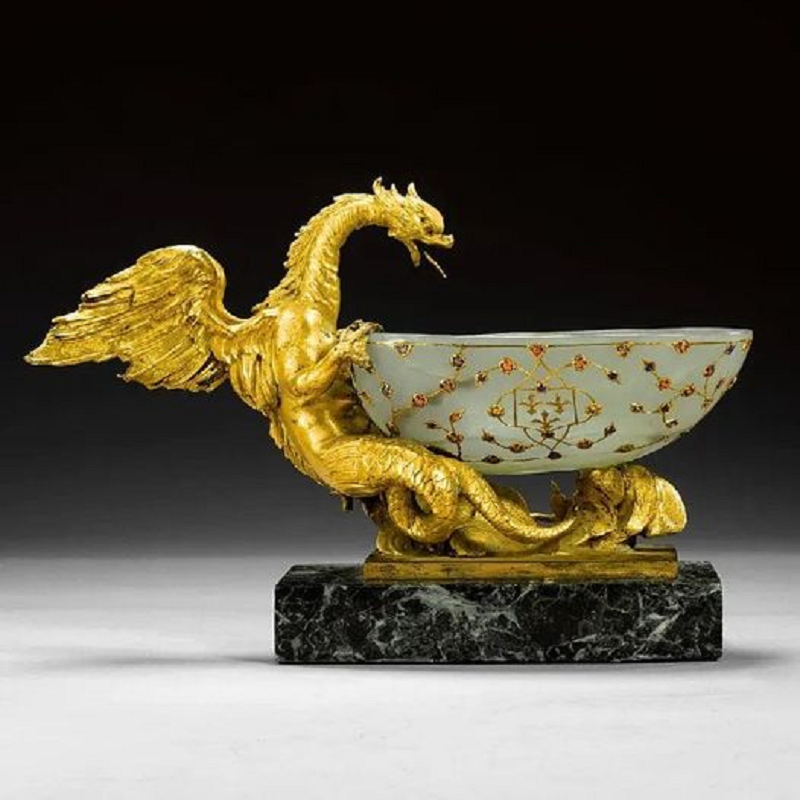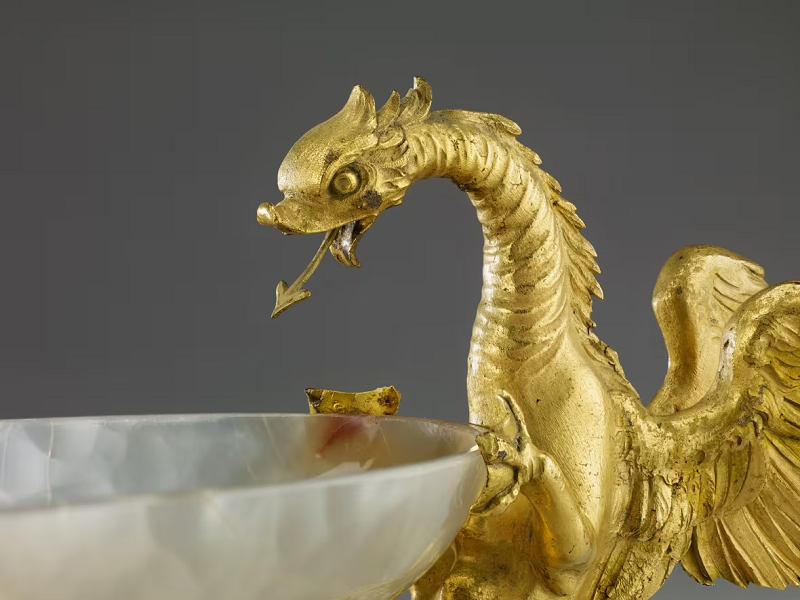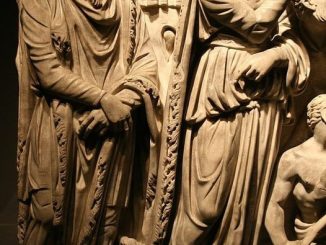In the intricate tapestry of Mughal history, each artifact tells a story of opulence, power, and cultural exchange. Among these treasures, the Mughal Jade Wine Cup with Azhdaha stands as a testament to the fusion of Persian mythology and Mughal grandeur. Crafted during the 16th to 17th centuries CE in Northern India, this exquisite piece not only embodies the artistic finesse of the Mughal era but also reflects the enduring legacy of the Azhdaha, a legendary creature deeply rooted in Persian folklore.
The Azhdaha, a mythical dragon-like creature, holds significant cultural importance in Persian mythology. Its origins date back to ancient tales of heroism and adventure, often depicted in Shahnama manuscripts—the epic chronicles of Persian kings and heroes. The Azhdaha, with its serpentine form and fearsome visage, symbolizes power, strength, and the eternal struggle between good and evil.

During the conquests of Timur (Tamerlane) in the 14th century, the Azhdaha emblem was acquired and adopted as a royal insignia, marking Timur’s conquest of Persia and the establishment of the Timurid Empire. This emblem became synonymous with imperial authority and legitimacy, transcending borders and cultures. The Mughal emperors, descendants of Timur, inherited this symbol of power and integrated it into their own regal iconography.
The Padshanama of Shah Jahan, the fifth Mughal emperor renowned for his architectural marvels such as the Taj Mahal, features numerous representations of the Azhdaha on Mughal flags, banners, and staffs. These depictions not only celebrated the Mughal rulers’ Timurid heritage but also reinforced their divine right to rule as descendants of legendary conquerors.
One notable instance of the Azhdaha’s prominence in Mughal history is its association with Emperor Aurangzeb, the last great Mughal ruler. Aurangzeb, known for his military campaigns and expansion of the Mughal Empire, named one of his favorite cannons “Azhdaha Paikar” (Dragon Body). This formidable weapon, with its menacing name, struck fear into the hearts of Aurangzeb’s adversaries during his conquests in the Deccan region of India. The Azhdaha, emblazoned on the cannon, served as a potent symbol of imperial might and domination.

The Mughal Jade Wine Cup with Azhdaha exemplifies the fusion of Persian and Mughal artistic traditions. Crafted from precious jade—a material revered for its rarity and beauty—the cup is adorned with intricate carvings depicting scenes of mythical creatures, floral motifs, and calligraphic inscriptions. The Azhdaha, with its sinuous body and fierce countenance, coils around the cup, symbolizing the union of earthly power and celestial protection.
As an archaeological artifact, the Mughal Jade Wine Cup with Azhdaha offers insights into the cultural exchange and artistic patronage of the Mughal courts. Its exquisite craftsmanship reflects the skilled artisans who brought visions of myth and legend to life, while its historical significance underscores the enduring influence of Persian mythology on Mughal rulership and identity.
In the annals of Mughal history, the Jade Wine Cup with Azhdaha stands as a shimmering testament to the grandeur and legacy of an empire that spanned continents and centuries. From the mythical realms of Persian folklore to the palaces of Mughal emperors, the Azhdaha’s enduring presence continues to captivate the imagination and illuminate the rich tapestry of cultural exchange in the Islamic world. As we marvel at this exquisite artifact, let us not only admire its beauty but also recognize the intricate threads of history and mythology that bind us across time and space.


